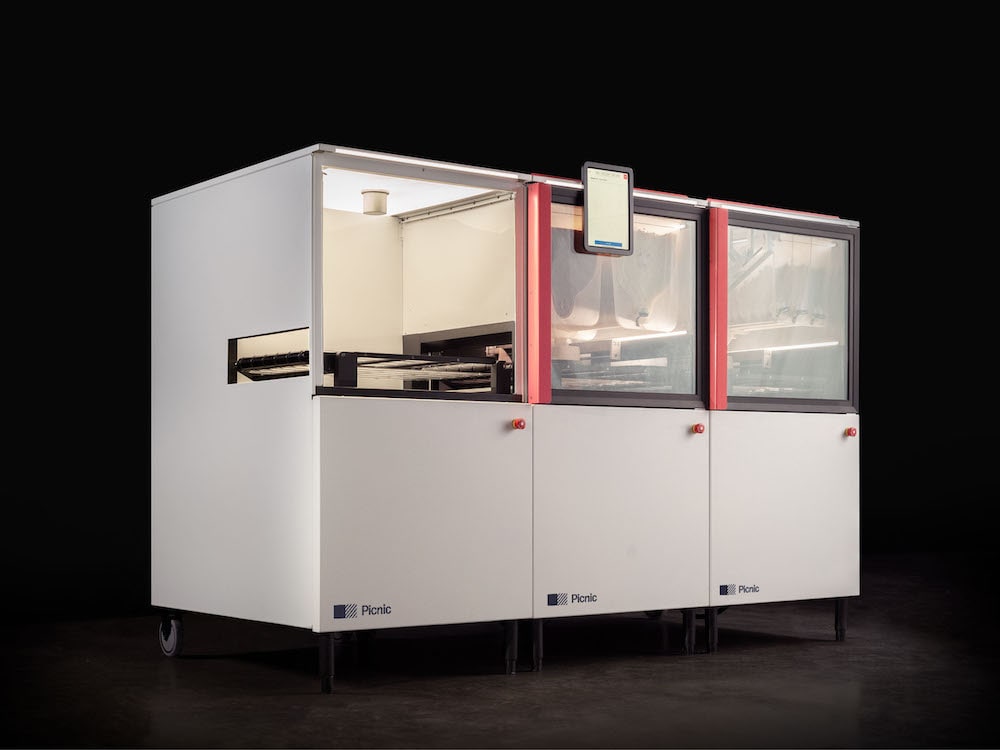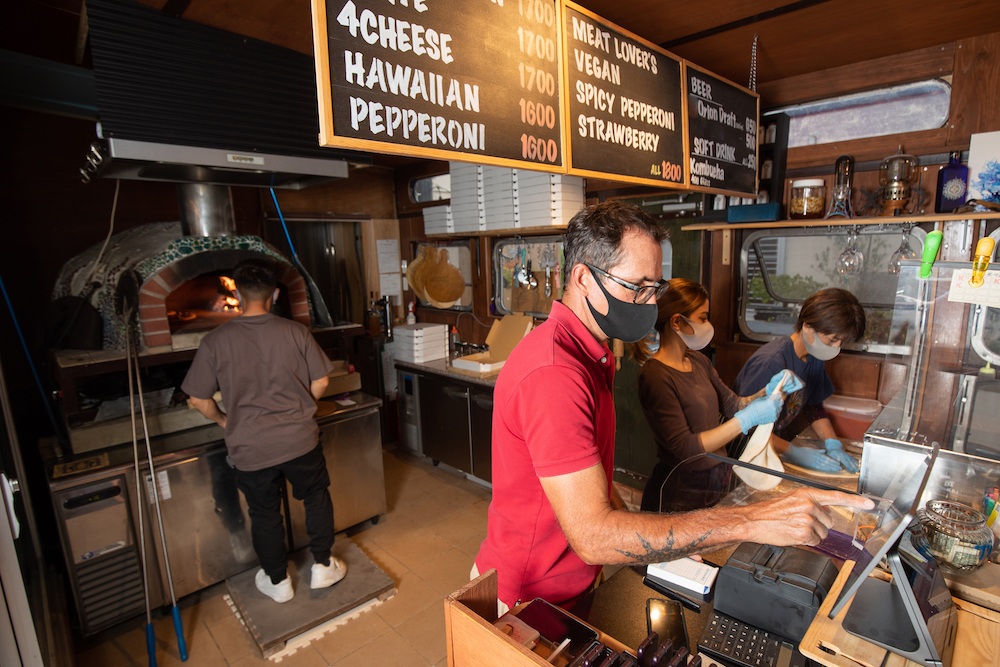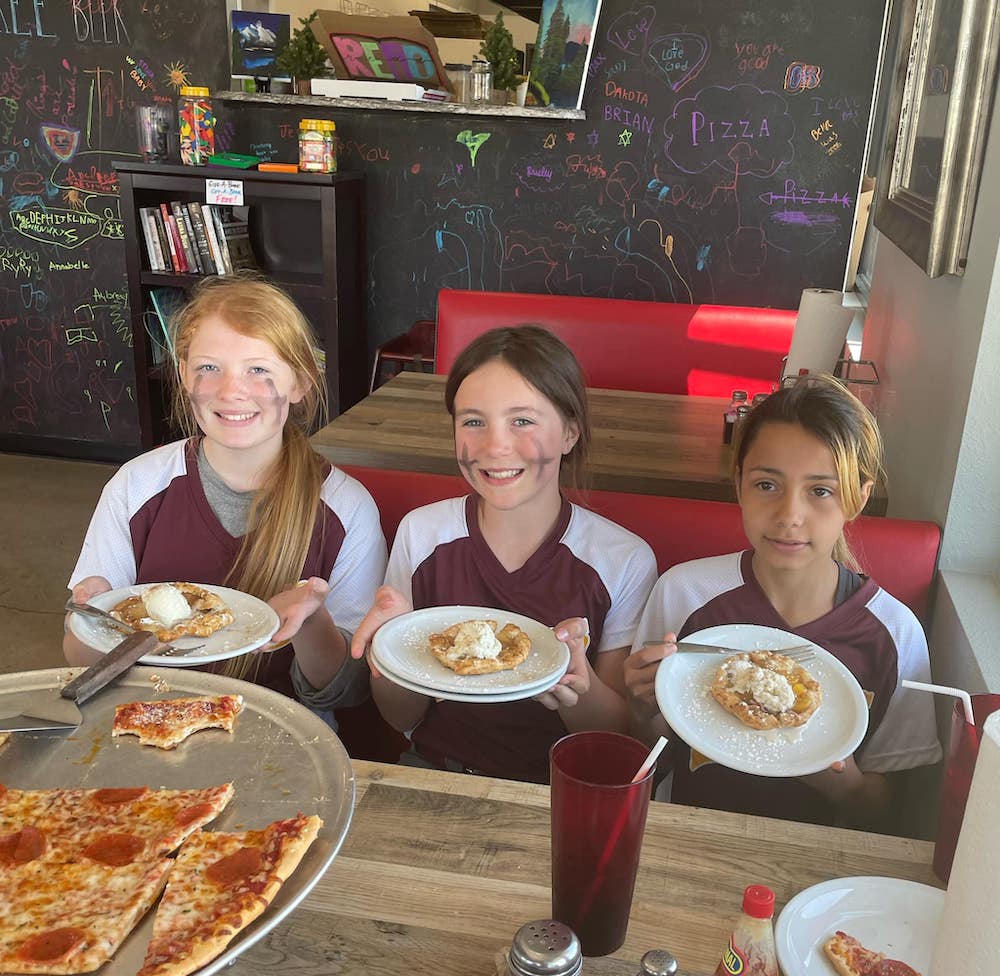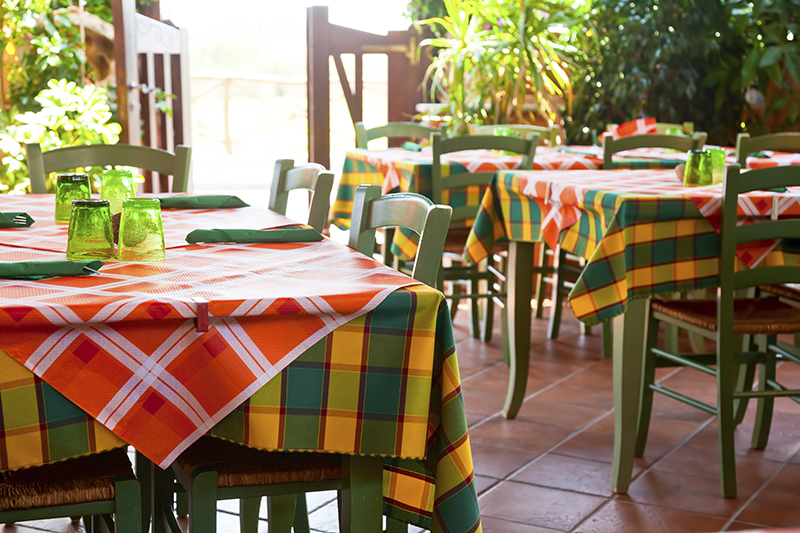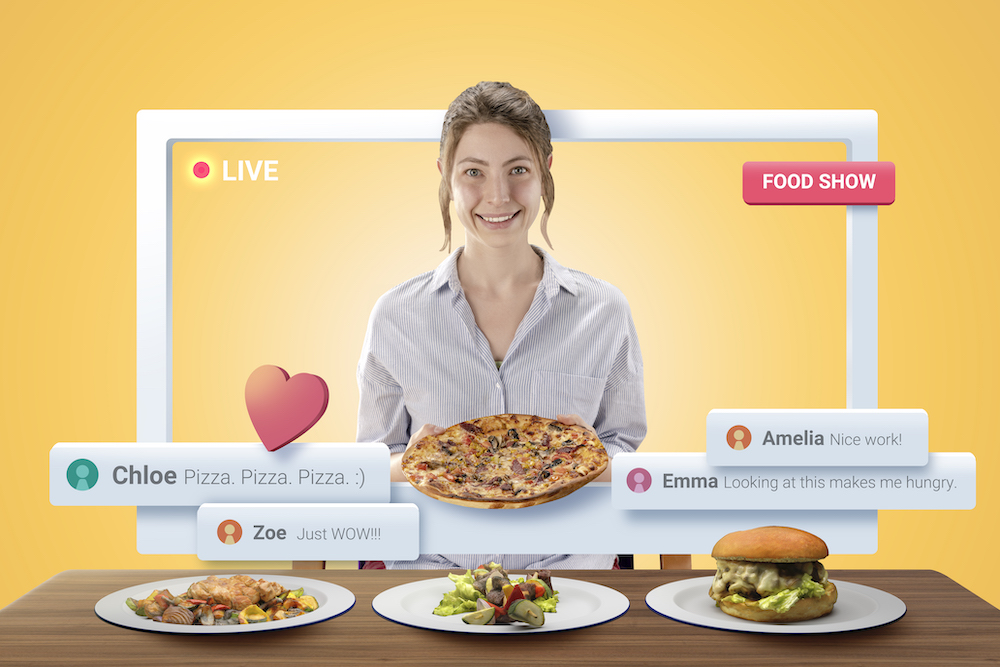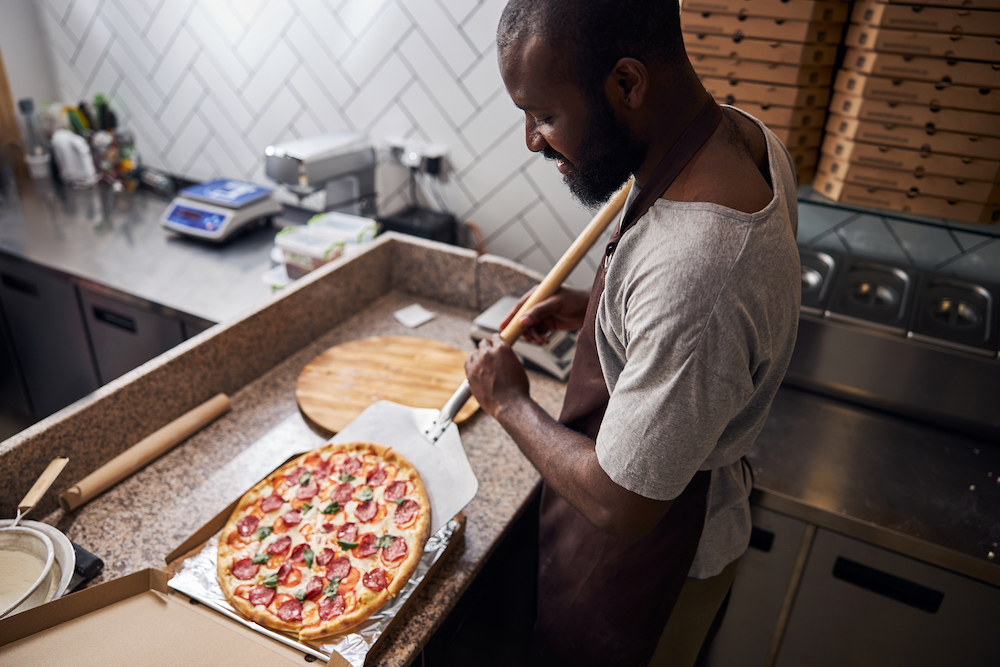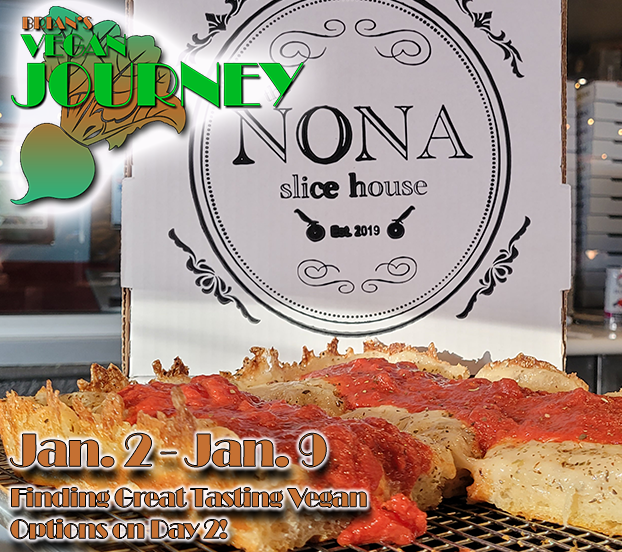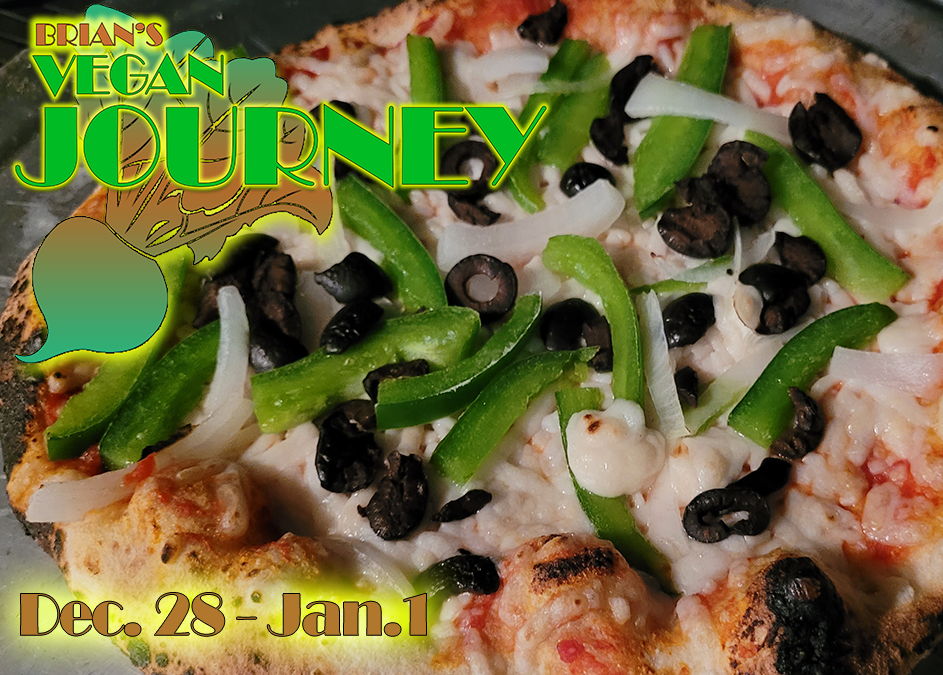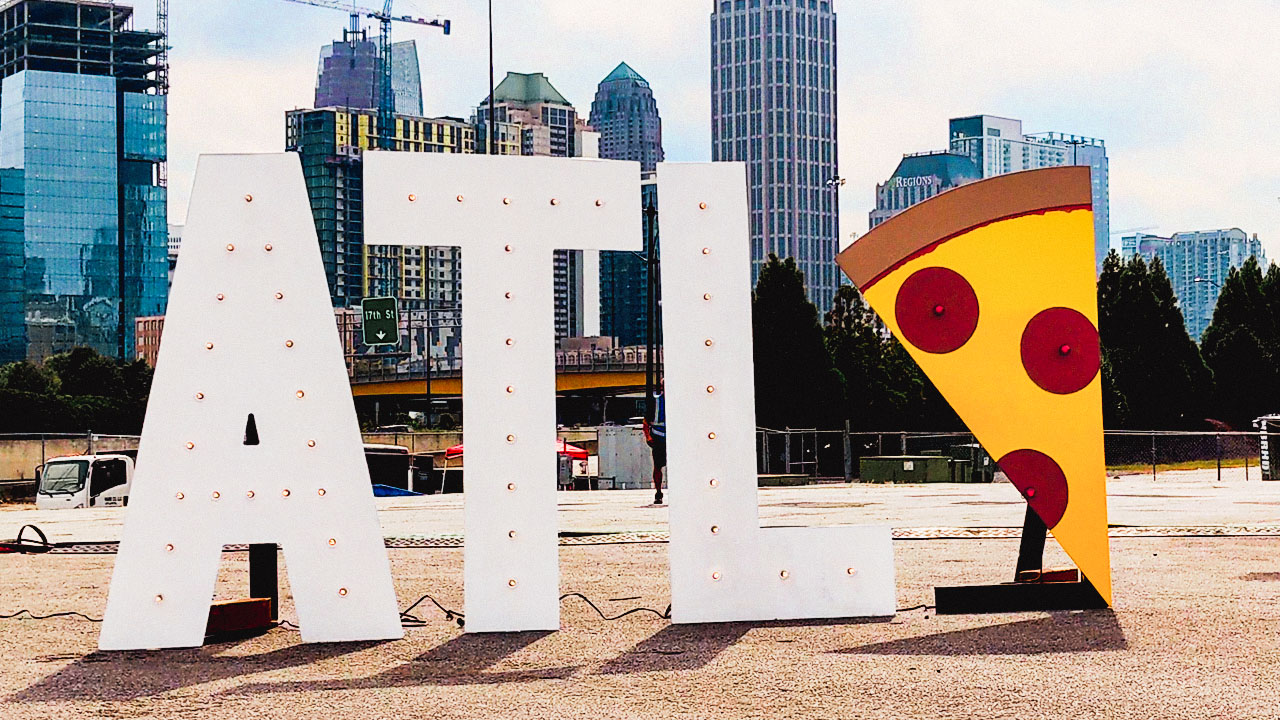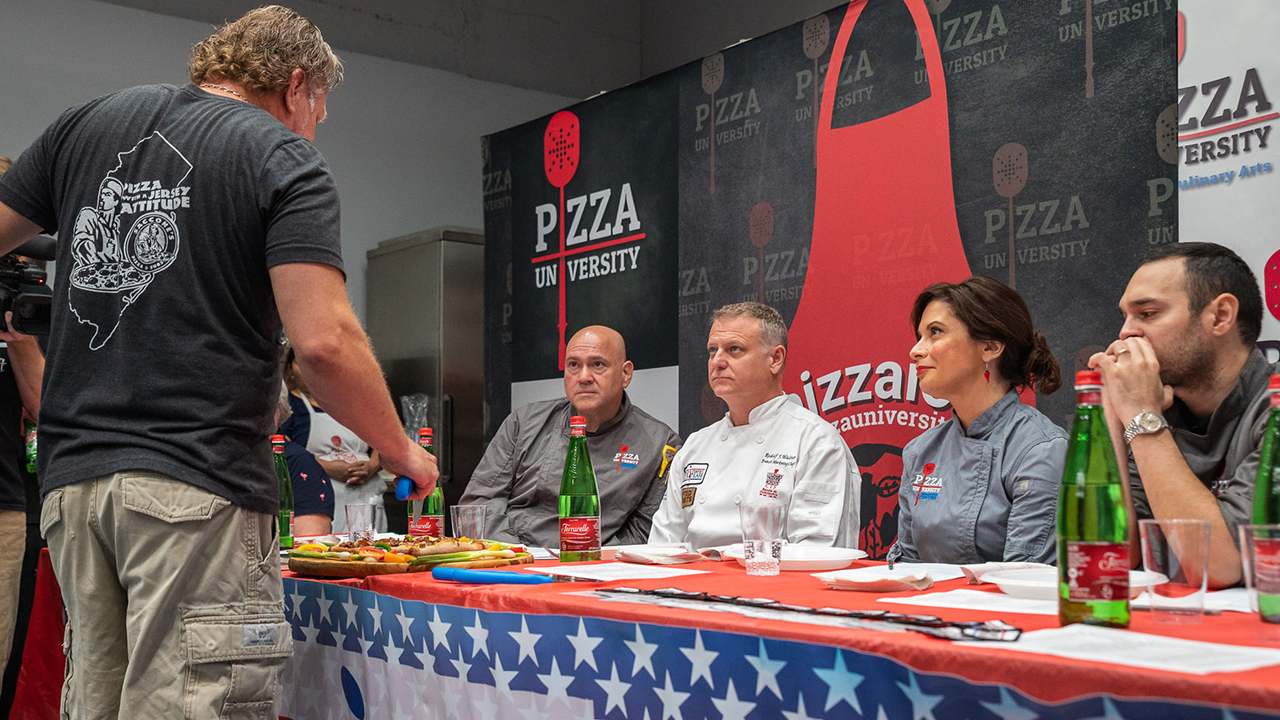- Clayton Wood, CEO of Seattle-based Picnic, says the company will start deploying its fully automated Picnic Pizza System in early 2021, with plans to ramp up production volume later in the year.
- Picnic’s Robotics as a Service (RaaS) business model means the restaurant operator pays no upfront costs for the purchase, implementation and maintenance of the system.
- The Picnic Pizza System can cut food waste down to as little as 1 percent while significantly reducing labor costs, according to Wood.
Related: Artificial Intelligence machine and pizza maker collaborate on artisan recipes
Editor’s note: This story has been updated with a more recent featured image showcasing the Pizza Picnic System’s new design.
Forbes last year declared that “robotic restaurants are the future,” and that future will be here sooner than you might think, if Clayton Wood has anything to say about it. As CEO of Picnic, the Seattle-based Robotics as a Service (RaaS) innovator, Wood has plans to get his company’s automated pizza-making system up and running in pizzerias this year. The Picnic Pizza System is essentially a modular assembly line for prepping pies that can significantly reduce a restaurant’s labor costs and food waste—all with a small footprint that will fit inside most pizza kitchens. It can even load the pizza straight into the oven.
How does it work, and, more importantly, will independent pizzeria operators be able to afford it? PMQ Pizza Magazine posed these questions to Wood in an email interview, and here’s what he told us:

Clayton Wood
PMQ: Tell us about the Picnic system. What are its capabilities in the pizza kitchen? Are there any kinks that still need to be worked out?
Wood: The Picnic Pizza System streamlines pizza making so you can focus on what matters—your food, your brand and the satisfaction of your customers. Our system automates the pizza-making process using a modular assembly line that can make any customized pizza recipe to perfection and fit into any kitchen configuration.
The modular system includes high-capacity dispensers for sauce and cheese, pepperoni and granular ingredients, and it can be configured to feed directly into the oven with no manual assistance. Additional toppings can be automated by adding more modules. The system enables kitchens to make hundreds of pizzas an hour with more cost savings on labor and food waste, which directly influences their bottom line.
Picnic is unique because no one has made pizza automation like this before, and there is no other system like this in kitchens today. Over the past year, we have been testing our prototype with customers, and now we are moving from R&D to commercial production. With any product entering the market, there is a lot to learn. We have been diligently working with our customers, fielding new requirements for the system to better understand what is most important for restaurant owners and various other kitchens in stadiums, hospitals, colleges and more. We have learned so much in 2020 through the collaboration with our customers, and we’re looking forward to the year ahead of us. We plan to start with small Picnic Pizza System deployments in early 2021 and then plan to ramp up production volume later in the year.
Related: What does the future of pizza look like?
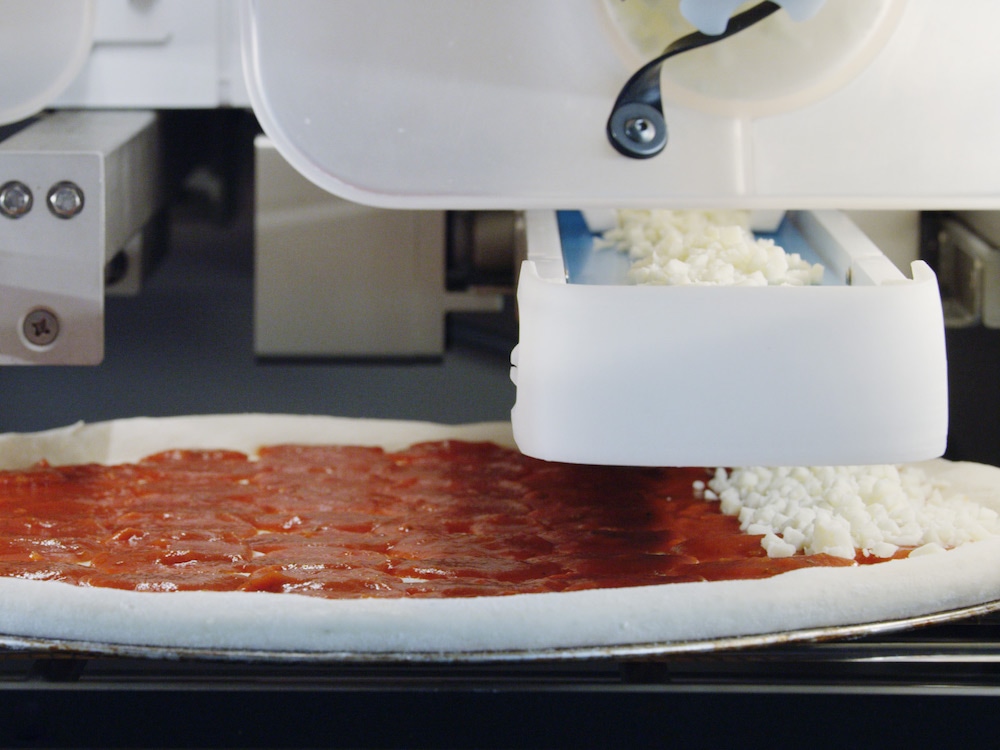
A dispenser in Picnic’s robotic pizza-making system adds cheese to a pizza crust. (Photo courtesy of Picnic)
PMQ: How can robotics help address COVID-19 requirements for restaurants?
Wood: Currently, restaurants are facing a lot of challenges with COVID-19 and looking for new ways to evolve their business model to better meet the changing demands of consumers. Order times matter more during the pandemic, and the quality of food at delivery is more important than ever. Additionally, restaurants are facing a labor problem because employees must be socially distant at the restaurant, making operating standards different. Food prep automation is a key element that can help restaurants change to that new way of operating.
PMQ: Have you installed the Picnic Pizza System anywhere yet? Who is using your system today?
Wood: We have worked with several kitchens, including Centerplate, a leader in live event hospitality at more than 200 prominent sports, entertainment and convention venues. In partnership with Centerplate, we have served pizza made by the Picnic Pizza System at several Mariners baseball games at T-Mobile Stadium in Seattle, Washington, and during CES 2020, where we made pizzas served to eventgoers to demonstrate its use in real-world kitchen settings at the show. In addition to Centerplate, we are preparing to install with additional customers today and have several unannounced relationships with significant pizza brands and other strategic partners that we plan to share in 2021.
PMQ: How easy or difficult is it to manage the robot system? What kind of training is involved?
Wood: The Picnic Pizza System is extremely easy to operate, install and maintain. Our business model is Robotics-as-a-Service (RaaS), which means that our team installs the system, helps maintain it and provides employee training. When we install the system, we make sure the customer has extra machine parts on hand, and we provide frequent onsite maintenance checks. Additionally, each customer’s system data is monitored by the Picnic team, so we know when there is an issue and how to help solve it immediately.
PMQ: Most smaller restaurant operators read about this technology and think, “Oh, I could never afford that.” So how affordable is it at this point for a smaller restaurant or pizzeria operator? I assume the restaurateur would lease the tech, both hardware, and software, from Picnic, right?
Wood: Our RaaS model means that there are no upfront costs to the purchase, implementation and maintenance of the current system and future product family. Combined with the fact that our system is modular, it’s applicable for any size kitchen, making it ideal for businesses of all sizes, from large corporations to individually owned pizzerias. There are also significant benefits to using our system with savings in labor, food waste, and improvements in operating efficiency driven by new data streams informing inventory, purchasing and menu design.
A typical pizza restaurant has 10 percent product waste, which can be costly. Our system limits food spillage and lays down a precise amount of ingredients, resulting in as little as 1 percent waste, which directly impacts the bottom line. So I would tell you that our product is very affordable for smaller restaurant owners and operators.
The 2021 Pizza Power Report: How pizzeria operators can thrive in the coming year
PMQ: How has COVID-19 impacted Picnic thus far? How do you think COVID-19 might permanently change the restaurant business in a way that could benefit Picnic and lead to more robots in kitchens?
Wood: COVID-19 has heightened customer interest in Picnic and our contactless food production, which enables socially distanced kitchen labor. The pandemic has businesses looking for new ways to prepare their food that has limited human contact with the highest standard of hygiene and helps employees make a consistently delicious product. Our solutions enable pizza companies to streamline these needs and provides a solution that has a small footprint, contactless pizza preparation, easy installation and no upfront fees.
COVID has impacted foodservice cataclysmically in multiple dimensions. By closing most dining rooms, order fulfillment shifted to delivery/carryout. Increased delivery/carryout drives the de-centralization of the kitchen because the adjacency of a dining room is no longer a factor. This has accelerated the ghost-kitchen trend but also enabled consumers to make new choices about where to buy commercially prepared food. Grocery stores and convenience stores have increased their offerings in prepared meals, even as they have eliminated salad bars and other self-serve offerings.
Pre-existing labor shortages transformed into restrictions on working conditions that limit the number of workers in the kitchen. Consumer interest in food safety has intensified to seek contact-free preparation and pickup. While each of these changes was already underway in the industry, the pandemic accelerated years of transformation into a few months, putting a huge strain on any operator who lacked the agility to pivot quickly.
The continued labor challenge and the low operating margin of foodservice is putting a major squeeze on all types of operators and makes them more amenable to new technology solutions than previously. Since automation can deliver cost-effective, consistent quality that has the added advantages of predictable timing and increased convenience for the consumer, its adoption is accelerating and the momentum builds. The consumer still wants what they wanted before–quality, convenience, personalization—and automation of the food preparation process will be the best way to deliver on that need.
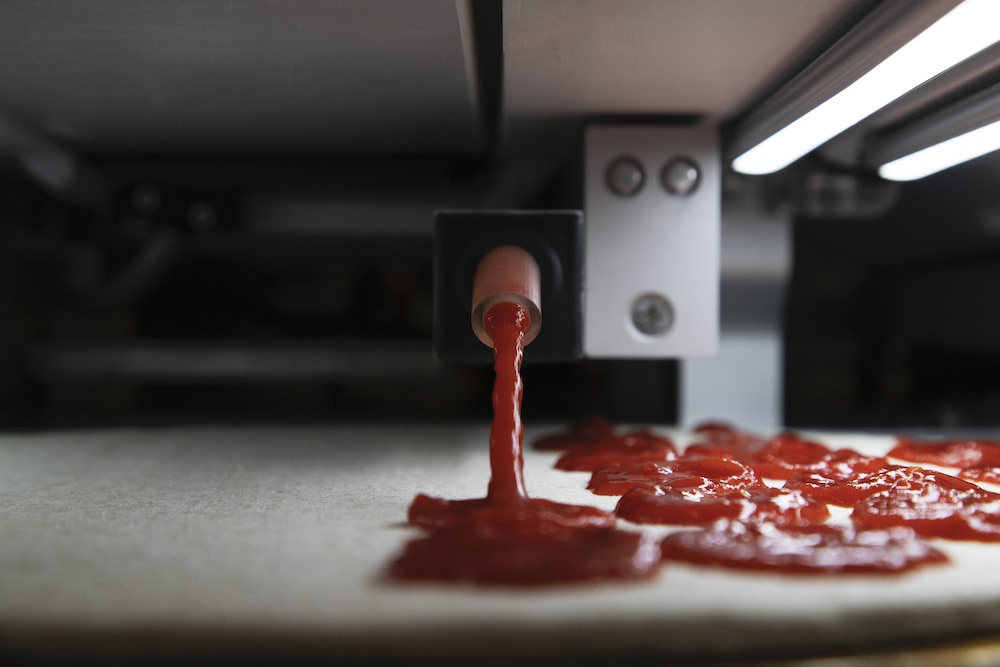
The Picnic Pizza System’s sauce dispenser
PMQ: When do you think we will start to see robots in a lot of restaurant kitchens? How far away are we?
Wood: We are starting to see more companies emerge into the space, but food technology is a complex problem for companies to solve. Not only do they need to create solutions that are helpful and reduce costs in the kitchen, but robotic solutions also need to meet hygiene standards and health code protocols. We see a lot of sophisticated technology that is fun and unique, like robotic arms providing functions like pouring coffee, but restaurants are looking for solutions that can help streamline processes and perform multiple functions to justify changing the operations of their kitchens. Unlike many other automation offerings, Picnic’s system can be installed with no remodeling of the kitchen and can be operated safely with no restrictions on worker movement.
We believe our Picnic Pizza System is a solution that can make an impact and influence kitchen bottom lines. The market is large, and we think we have a huge opportunity in front of us.

